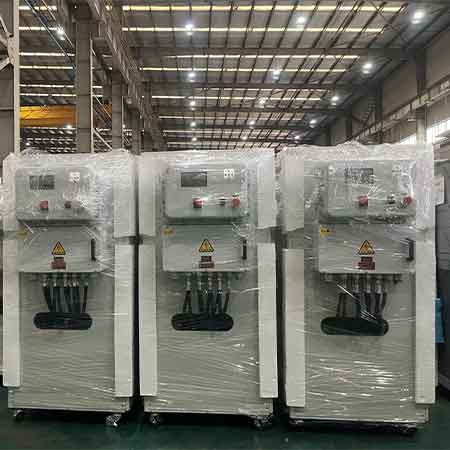The cooling methods of the energy storage system include air cooling, liquid cooling, phase change material cooling, heat pipe cooling and so on. At present, the industry is mainly based on air cooling and liquid cooling. The advantage of the air-cooled system is that it has more price advantages, high reliability and higher penetration rate. Compared with air cooling, liquid cooling has four main advantages: lower battery pack temperature, lower operating energy consumption, lower risk of battery thermal runaway, and lower investment cost. Thermal management and phase change cooling have good thermal performance, but at a higher cost.
In the future, with the improvement of energy storage capacity and charge-discharge rate, the proportion of medium and high-power energy storage products using liquid cooling will gradually increase, and liquid cooling is expected to become the mainstream solution in the future. Especially as the energy storage system develops in the direction of large capacity and high energy density, its penetration rate will be greatly improved.

Commonly used cooling methods for energy storage systems
Cooling is an important aspect of energy storage systems as it helps to keep the system running safely and efficiently. In energy storage systems, refrigeration is often used to regulate the temperature of batteries, electronics and other components that generate a lot of heat during operation.
Commonly used cooling methods for energy storage systems are as follows:
1. Air Cooling: Air cooling is a simple and cost-effective method of cooling energy storage systems. It uses a fan or blower to circulate air over system components, removing heat through convection.
2. Liquid cooling: Liquid cooling is a more effective method of cooling energy storage systems than air cooling. It uses a liquid, such as water or a specialized coolant, to remove heat from system components. Liquid can be circulated through pipes or sprayed directly onto components.
3. Phase change cooling: Phase change cooling uses a special coolant that changes from a liquid state to a gaseous state to remove heat from system components. This approach is very effective, but can be expensive and complex to implement.
4. Hybrid cooling: The hybrid cooling system combines two or more cooling methods to provide the best cooling solution for the energy storage system. For example, a hybrid cooling system might use air cooling for some components and liquid cooling for others.
The choice of cooling method mainly depends on factors such as the size, type, operating conditions of the energy storage system, and the cost and complexity of the cooling system. Designing efficient, reliable and safe cooling systems is very important to ensure the performance of energy storage systems.
 LNEYA
LNEYA
 简体中文
简体中文


















































































